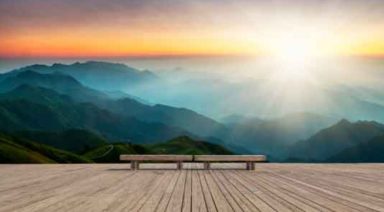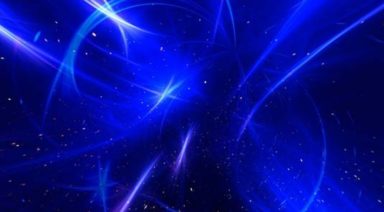How to Free Your Soul: Liberating Your Authentic Self

In modern society, we tend to wear a lot of hats, or masks, or whatever metaphor you’d like to use. We have one for our home life, one for work-life, one for close friends and family, one for other friends we’re not as close with…. the list goes on. But what about that unmasked self? Your true, authentic self, the one maybe you only really know?
Is it even possible to show that authentic self to others without some type of filter? And is it even worth it? The short answer, yes. And by embracing this authentic self, you’ll be better prepared to take on the more meaningful pursuits of life, such as your soul’s core desires. These desires of attaining fulfillment, desire, and eventually enlightenment are what we’re all here to do right?
What Does it Mean to Free Your Soul?
To free your soul is to embrace the essence of that authentic self, and wear fewer masks. Of course, it may not always be appropriate to not put on some sort of filter for various life scenarios, but the more you work toward embodying that true self, the more secure you’ll become, subsequently improving your well-being.
And by improving your well-being at the most basic levels, you can then begin to pursue spiritual well-being at higher levels.
Understanding Core Soul Desires
Ancient Vedic texts tell us that there are four core soul desires: the desire for purpose (dharma), the means to fulfill our purpose (artha), the pleasure associated with living our purpose (kama), and freedom (moksha).
These four purusharthas, also known as the four aims of life, are intrinsic. They’re directly linked to the personal, unique Jivatman part of our soul and the infinite, unlimited Paramatman part of our soul.
1. DHARMA
Your duty, calling, or life’s purpose; you’ve likely heard the phrase “finding your Dharma,” which is typically meant in terms of finding your purpose in life that leads to happiness and fulfillment.
The concept of Dharma is an interesting one and can vary in meaning across the eastern religions that embrace it. Dharma can also refer to the underlying order of the universe or self-organizing nature of reality to which we inevitably align with. Dharma can also refer to the teachings of Buddhism, Hinduism, Sikhism, and Jainism.
2. ARTHA
Prosperity, or having the things you need to do your dharma. Again, in eastern philosophy, these concepts aren’t simply defined and can mean a few things, but essentially your Artha is the foundational and material things needed in your life. For some, this can mean wealth, a home, and material prosperity—things that make you feel secure and not wanting. For others, however, this can mean health and wellness, because without these you’ll be distracted and focused on attaining them, rather than focusing on spiritual growth and some of the more intangible pursuits in life.
3. KAMA
Desire or pleasure; the reward of living our dharma. You’ve likely heard the word Kama before in terms of sexual pleasure and desire—the Kama Sutra. But Kama isn’t purely sexual, it refers to any type of longing, wish, passion, or desire. When balanced with the other three goals of life, Kama is important and necessary to have, if you had no passion or desire for anything in your life, it would be meaningless and you’d probably be pretty depressed. Finding your Kama, and the Kama that really drives you is an absolute must in the attainment of happiness and fulfillment.
4. MOKSHA
Liberation, freedom, or release. The first three lead to this last one. Moksha is tantamount to enlightenment, or the freedom from ignorance and suffering. This is much in alignment with enlightenment: literally lightening up (moving from the base chakras to the ethereal upper ones), and living from a place of love. It’s important to understand each of these forces at the beginning of your personal growth journey to end up experiencing Moksha.
10 Ways to Free Your Soul
Your free soul will give you unlimited guidance on how to live your dharma and find moksha. Here are 10 ways you can free yourself and live your best life.
1. Act With Kindness
Our soul ain’t nothin’ but love and light. Be the positivity the world needs.
2. Cultivate Compassion
Compassion frees us from judgments and criticisms of others—and our self.
3. Be Curious
Coming from a place of beginner’s mind is akin to aligning with the innocence of your soul.
4. Create Something
A doodle, a haiku, journaling, a shift in the dynamic of an old relationship. Our soul is like the sun, a powerful creative force of energy.
5. Be In Your Body
Our thoughts are connected to our monkey mind and can do a pretty good job of keeping us from experiencing our soul.
6. Meditate
Sitting in stillness or doing a moving meditation will help to shift you away from daily life thoughts.
7. Practice Asana
Yoga asana is a brilliant way to evoke the wisdom of your body, clear your mind, and hear your soul. Practicing on your own through online yoga classes or by going to a studio regularly is a great way to keep this element consistent in your life.
8. Do Pranayama
Like asana, but it can be even more powerful. Breath of fire and Kapalbhati are a favorite as they can quickly clear the mind and draw energy up to the crown.
9. Be Childlike
Remember what brought you joy as a kid. Do more of that.
10. Everyday Do Less of What Causes You Stress, and More of What You Love
Subjects Able to Intentionally Heal in Lucid Dream, Study Finds

The findings of a groundbreaking new study on lucid dreaming are in and suggest that those trained in the practice not only see a dramatic improvement in their PTSD symptoms but may also experience change on a biological level.
Research into lucid dreams, in which one wakes up inside a dream, has produced a fascinating insight into the neurological features of this state. Most of the investigation thus far has been focused on mapping brain activity, which has shown the unique characteristics of the brain function of lucid dreamers.
Previously we reported on the preliminary findings of a study out of the Institute of Noetic Sciences, or IONS, the first of its kind to look at the potential for healing within a lucid dream, both on a psychological and physiological level.
Dr. Garret Yount is a molecular neurobiologist who led the study and updated us on the final findings of this extraordinary investigation.
“So in this study, we partnered with an awesome lucid dreaming teacher, Charlie Morley, and we had heard from him that his workshops with veterans with PTSD were really helpful in terms of reducing the symptoms of PTSD,” Yount said. “So, we partnered with him to basically bring a scientific lens to that, and the idea was to recruit folks with chronic PTSD, we included both veterans and non-veterans. They attended a one-week workshop from their home, and Charlie taught them how to achieve lucidity with the goal of transforming their trauma during the dreams. Then we, the research team, just tried to collect data along the way without interfering too much with the process.”







